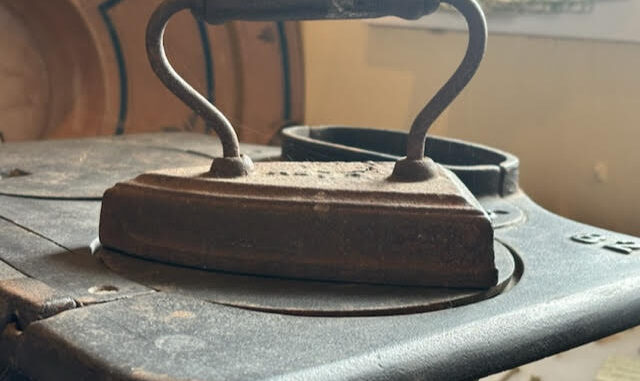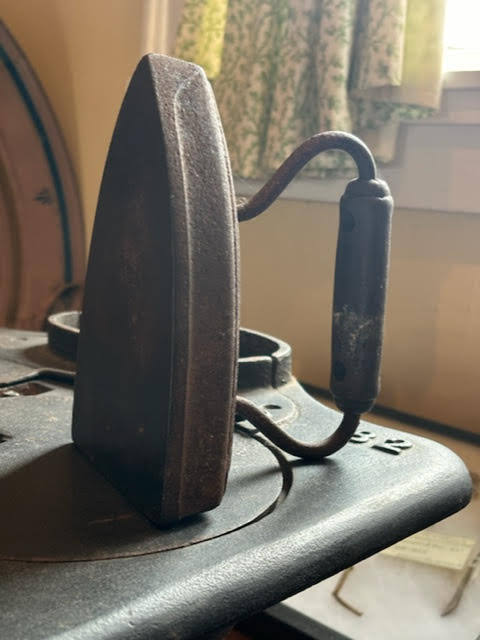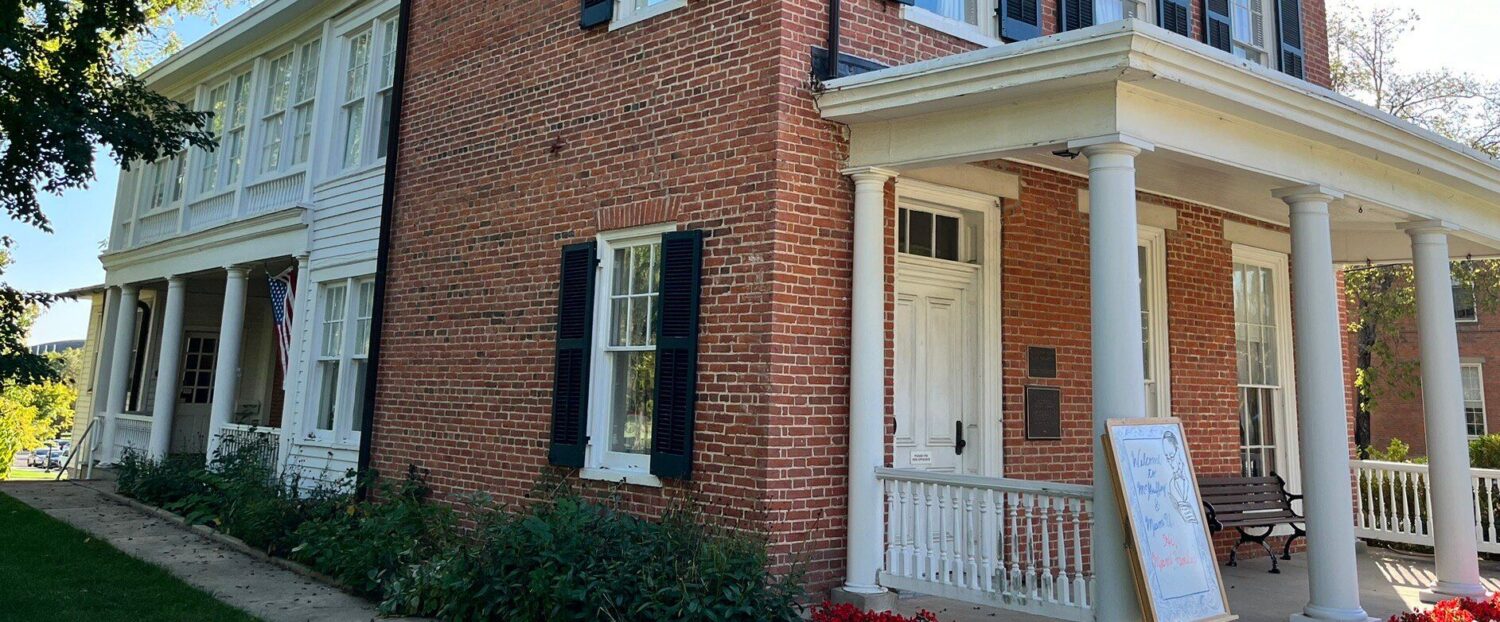
Jennifer Lorenzetti, MS – Curator
The sad iron on display at the McGuffey Museum
As long as there has been clothing that could wrinkle, there have been clothes irons. Metal irons have been traced back to the late Middle Ages, and clothes irons made of other materials likely go back further than that. Anything that a person could heat and then use to press fabric is a type of iron, press, or smoother, with the name depending on the period and the material.
If you were living in Oxford at the time of the McGuffeys, chances are you would be ironing your family’s clothes with something called a sad iron. The word “sad” does not necessarily refer to the demeanor of the person using the iron. Rather, it comes from an older word, “sald,” which means solid.
A sad iron is typically a heavy, solid piece of iron with a handle. The user would heat the iron by the fire or on the cookstove and then use it to press clothes until it was cool and ineffective. The iron was then reheated, and the task of pressing clothes would continue. Irons typically had the same shape we recognize today, with a broad sole plate that tapers to a point to help iron pleats, pockets, and arm holes.
“Ironing…had traditionally been one of the most dreadful household chores, especially in warm weather when the kitchen stove had to be kept hot for the better part of the day,” writes Ruth Schwartz Cowan. Other problems included scorching the clothes, catching on the clothes with an uneven sole plate, and burning the operator with a hot handle or radiated heat. Imagine doing this task in Oxford in August! Yet many people ironed not only their clothing but also their table linens, sheets, and pillowcases.

Another view of the sad iron, this view with the iron on end showing the sole of the iron
A look at U.S. patent records shows that many attempts were made over the years to improve the experience of ironing. These included changeable sole plates to be sure the surface of the iron touching fabric was smooth; improvements in the handle such as making it in wood, a poor conductor of heat; creation of an asbestos cover that would insulate the iron and sole plate to protect the user; and making irons with interchangeable bottom shoes so one could always be heating while the other was being used.
Significant improvements to the clothes iron came in the late nineteenth century, when the first electric iron was invented. This was a natural outgrowth of widespread electrification of homes, an improvement that changed not only the iron but also methods of cooking food on electric stoves and keeping it cool in refrigerators. It is likely the last few generations of Americans see ironing as an occasional chore. So-called “permanent press” fabrics reduced the need for ironing in the second half of the twentieth century, while today’s athleisure trend may mean that few if any of our students know how to iron!
At the McGuffey House & Museum, we have a sad iron that is displayed in the kitchen area of the building. This is a very basic iron with no way to remove the handle from the sole plate or avoid placing the iron on the stove or in the fireplace to heat. Visitors may ask the docents if they can pick up the sad iron and see what it might have been like to wield this heavy tool through not just minutes but hours of ironing a family’s clothes.
Like many household chores, ironing was typically done by the women of the house, while men were doing their share of heavy lifting outside or on the job. However, one encounter with a sad iron may convince you of the amount of physical strength it took to operate a simple clothes iron.
Sources
Cowan, Ruth Schwartz. “The ‘Industrial Revolution’ in the Home: Household Technology and Social Change in the 20th Century.” The Routledge Companion to Modernity, Space and Gender, March 9, 2018, 69–85. https://doi.org/10.1201/9781315180472-7.
Moscardini-Hall, Christine. “Sadiron.” UTSA Institute Of Texan Cultures, April 29, 2022. https://texancultures.utsa.edu/collections-blog/object-iron.
